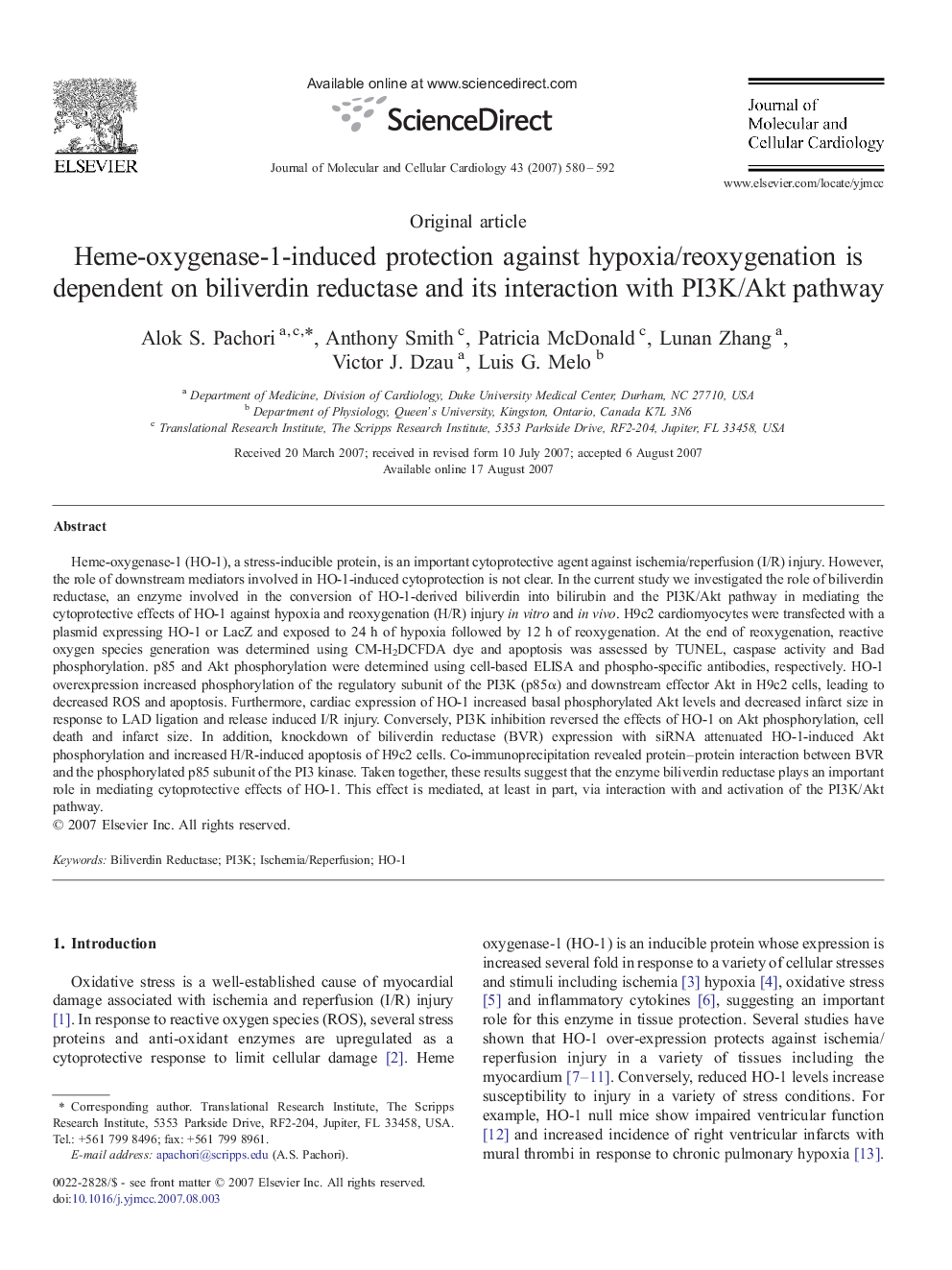| Article ID | Journal | Published Year | Pages | File Type |
|---|---|---|---|---|
| 2191815 | Journal of Molecular and Cellular Cardiology | 2007 | 13 Pages |
Heme-oxygenase-1 (HO-1), a stress-inducible protein, is an important cytoprotective agent against ischemia/reperfusion (I/R) injury. However, the role of downstream mediators involved in HO-1-induced cytoprotection is not clear. In the current study we investigated the role of biliverdin reductase, an enzyme involved in the conversion of HO-1-derived biliverdin into bilirubin and the PI3K/Akt pathway in mediating the cytoprotective effects of HO-1 against hypoxia and reoxygenation (H/R) injury in vitro and in vivo. H9c2 cardiomyocytes were transfected with a plasmid expressing HO-1 or LacZ and exposed to 24 h of hypoxia followed by 12 h of reoxygenation. At the end of reoxygenation, reactive oxygen species generation was determined using CM-H2DCFDA dye and apoptosis was assessed by TUNEL, caspase activity and Bad phosphorylation. p85 and Akt phosphorylation were determined using cell-based ELISA and phospho-specific antibodies, respectively. HO-1 overexpression increased phosphorylation of the regulatory subunit of the PI3K (p85α) and downstream effector Akt in H9c2 cells, leading to decreased ROS and apoptosis. Furthermore, cardiac expression of HO-1 increased basal phosphorylated Akt levels and decreased infarct size in response to LAD ligation and release induced I/R injury. Conversely, PI3K inhibition reversed the effects of HO-1 on Akt phosphorylation, cell death and infarct size. In addition, knockdown of biliverdin reductase (BVR) expression with siRNA attenuated HO-1-induced Akt phosphorylation and increased H/R-induced apoptosis of H9c2 cells. Co-immunoprecipitation revealed protein–protein interaction between BVR and the phosphorylated p85 subunit of the PI3 kinase. Taken together, these results suggest that the enzyme biliverdin reductase plays an important role in mediating cytoprotective effects of HO-1. This effect is mediated, at least in part, via interaction with and activation of the PI3K/Akt pathway.
